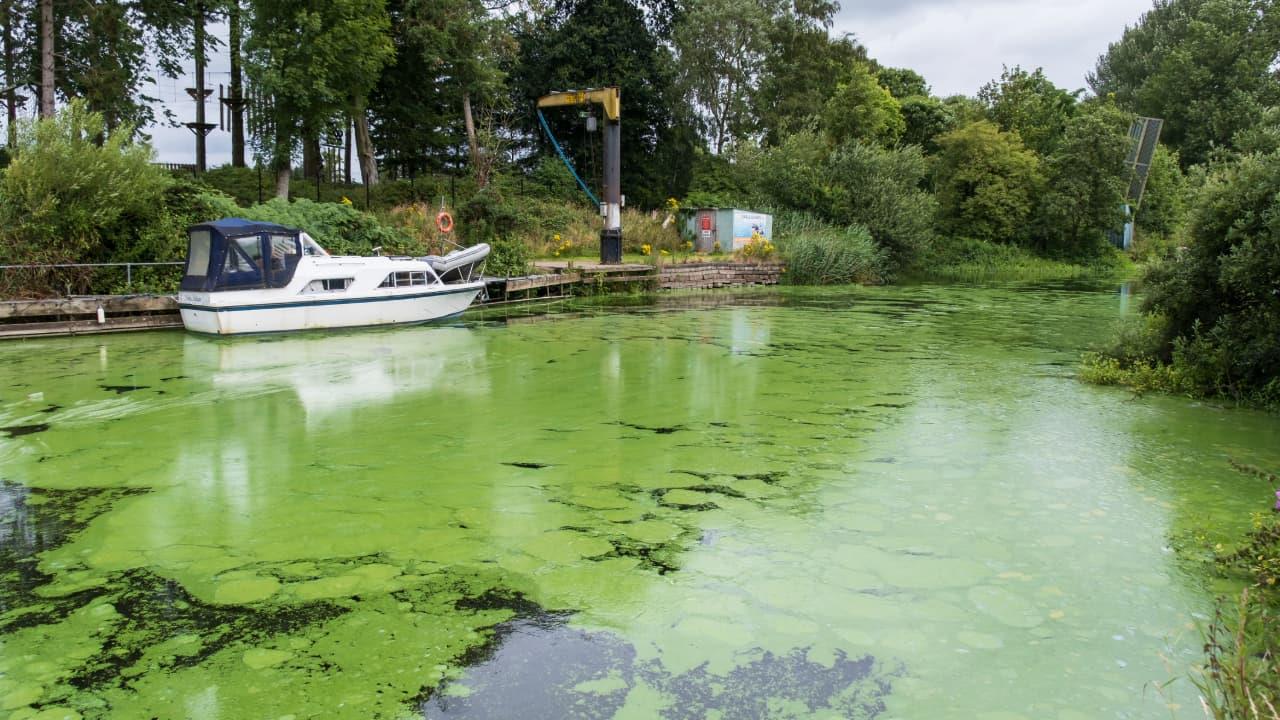UK's Largest Lake At Risk: Pollution And Algae Blooms Threaten Lough Neagh's Ecosystem
Lough Neagh is the largest lake in the UK and Ireland. For the third consecutive year, a dense, green layer of harmful algae has covered a large portion of this lake, raising significant concerns. This summer, the issue has worsened, with the algae spreading so extensively that it is visible from space.
Mary O'Hagan, an open-water swimmer from Ballyronan, a village on the western edge of the lake, says, "The lake is dying." She notes that ducks are slipping on rocks covered in green slime, which is heartbreaking to see.
The algae, known as blue-green algae, is not just an eyesore. Locals describe it as having the odour of rotten eggs. Experts believe it is caused by a number of reasons including pollution from farms, factories, and untreated sewage, along with climate change. These algae blooms have already impacted fish, water activities, and possibly even the safety of drinking water.
What's Causing It?
The main issue is the excessive amount of nutrients entering the lake. These nutrients, especially nitrogen and phosphorus, come from fertilizers and animal waste. When they wash into the lake from nearby farms, particularly large-scale poultry farms that supply meat-processing companies, they create ideal conditions for algae growth.
Some of the pollution also comes from sewage. Experts say it's a complex issue, but the evidence suggests that human activities are playing a significant role.
A Personal Loss for Many
For people like Mary O'Hagan, the lake is more than just water, it is a vital part of life. During the COVID-19 lockdowns, she trained in Lough Neagh, and swimming there was her way of staying healthy, both physically and mentally. However, the algae has made the water unsafe, forcing her to stop swimming. She now relies on indoor pools.
Mary is part of a group called Save Lough Neagh, which is urging the Northern Ireland government to take stronger steps. They are calling for fines on polluting farms and companies for an independent environmental agency to properly enforce pollution levels.
Wildlife and Jobs Affected
The lake's wildlife is also struggling. A type of small fly called the Lough Neagh fly, which is essential for fish and birds, has nearly disappeared because of algae. Local fisherman Mick Hagan says fishing has declined. He now runs a pizza truck near the lake, but even that has suffered. The strong smell of algae kept tourists away this summer.
Gavin Knox, who runs a paddleboarding business, says the algae made it impossible to continue. He started his business in 2022 and worked with families, people with disabilities, and those recovering from brain injuries. But after the algae appeared, customers stopped coming.
Climate Action
Last year, the Northern Ireland government announced a plan to improve the lake. However, so far, less than half of the promised actions have been carried out. The remaining steps may not happen until 2026 or later. With about 40% of Northern Ireland's drinking water coming from Lough Neagh, some fear a public health crisis could be on the horizon.
Lough Neagh is more than just the UK's largest lake. It is a vital natural resource, a source of livelihoods, and a part of local identity. But unless stronger action is taken soon, it may be too late to save it.
Source: Phys
Legal Disclaimer:
MENAFN provides the
information “as is” without warranty of any kind. We do not accept
any responsibility or liability for the accuracy, content, images,
videos, licenses, completeness, legality, or reliability of the information
contained in this article. If you have any complaints or copyright
issues related to this article, kindly contact the provider above.
Most popular stories
Market Research

- What Does The Europe Cryptocurrency Market Report Reveal For 2025?
- United States Kosher Food Market Long-Term Growth & Forecast Outlook 20252033
- Utila Triples Valuation In Six Months As Stablecoin Infrastructure Demand Triggers $22M Extension Round
- Meme Coin Little Pepe Raises Above $24M In Presale With Over 39,000 Holders
- FBS Analysis Highlights How Political Shifts Are Redefining The Next Altcoin Rally
- 1Inch Becomes First Swap Provider Relaunched On OKX Wallet






















Comments
No comment